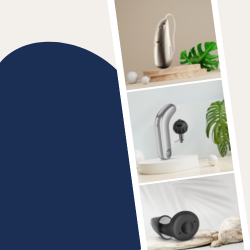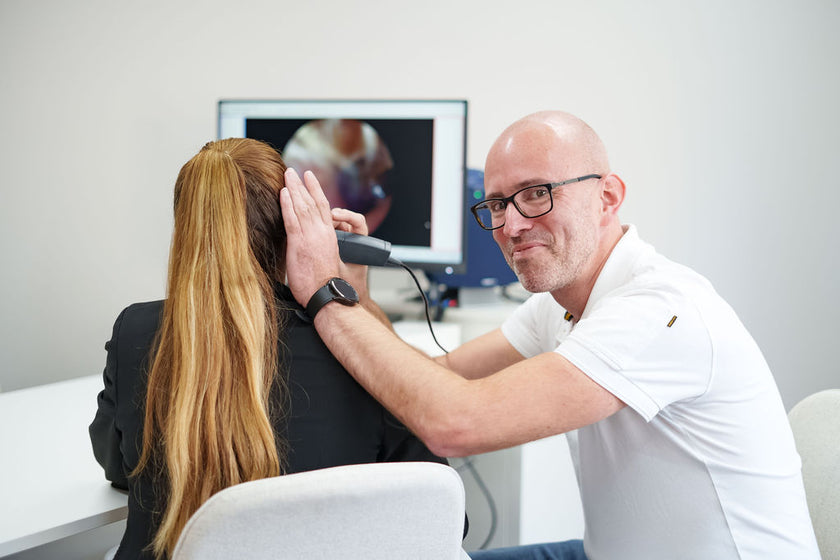Hearing aid with a blood pressure monitor or temperature monitor? I expect this within 5 years.u201d
Jan de Laat is a clinical physicist and audiologist at the Leiden University Medical Center and is an authority in his field. He is busy measuring hearing function on a daily basis, but also examines the psychological and psychosocial aspects of hearing impairment and the help that can be offered. At Starkey Hearing Technologies in Minneapolis, we spoke to Dr. Ir. de Laat on the development of hearing aids.
What can a hearing aid do nowadays?
u201cThe hearing aid has undergone many developments in recent years. A hearing aid is much better today than it was a few years ago. Developments are going really fast and that is why I expect many more changes! The new Starkey Livio AI is proof of that. u201d
What do you mean by that?
u201cThe Starkey Livio AI is characterized mainly by the fact that a number of extra bodily functions are included in the hearing aid that are important in the context of health. The hearing aid distinguishes itself in two functions, namely the functioning of the body and the brain tracker. The functioning of the body is measured on the basis of, among other things, the pedometer and the fall detection. The brain tracker simultaneously measures whether you have daily social contact and come into different social situations. This is measured by noise. In a busy restaurant you experience more noise than watching television at home. u201d u201cWhat makes the Starkey Livio AI special is that the sensor in the hearing aid is very accurate. Independent tests have even shown that the accuracy is better than other health products, such as pedometers, that offer this. u201d
What features will be added to hearing aids in the future?
u201cThere are a number of features that I expect to be added in the short or long term. These include a blood pressure monitor (upper and lower pressure), temperature monitor and heart rate monitor. I also do not rule out the measurement of emotion and stress. What is also interesting is that the vestibular organ is located in the auditory organ. Perhaps a measurement of this can be obtained in the future. With this you could measure whether someone is in danger of falling or is seasick. u201d u201cWith the advent of 5G and BT-6 (the latest version of Bluetooth), there is a possibility that the processor will be moved from the hearing aid to the smartphone. The microphone is still in the hearing aid, but the software for all extra features is in the smartphone. This ensures that there is even more room for other features. I expect this to happen within 5 years, but perhaps even sooner. u201d
In addition to additional functions, are there also developments in the field of hearing?
u201cOf course speech understanding in hearing aids is still being improved. Microphone technology is getting better and better, so that buzz or background noise can be filtered. The smartphone microphone has also come to play an increasingly important role in hearing. It is quite conceivable that the smartphoneu2019s microphone will be used as a streamer. By placing your smartphone somewhere, you could then stream the sound from there to your hearing aid. It is already possible to stream the sound from your smartphone to your hearing aid if you want to listen to music, for example, but following a live conversation from 5 to 6 meters away is the next step. At the moment that is not yet possible, because there is too much delay. u201d
You describe a lot of developments, but isnu2019t this going too quickly for the elderly?
u201cDevelopment cannot be stopped, but it is important that it can be followed by the elderly. Older people go along with the technology, but it has to be very user-friendly for them. I believe that there is still something to be achieved in that area. u201d
Another development is the shift from traditional hearing specialist to online, like Online Hoortoestel does. What do you think of this concept?
u201cI have to admit that a few years ago I was somewhat suspicious when I heard about the concept. I think four conditions are very important: quality must be guaranteed, there must also be personal contact, clients must be able to reach a hearing care professional and hearing care professionals must be Star certified. If this is the case, I agree! u201d
I understand!
Of course, online does not mean that people no longer have (face-to-face) contact with a hearing care professional. OnlineHearingAids.com has a number of hearing centers in the Netherlands where people can come for a hearing test, because that cannot be performed online of course. During this hearing test, more than 1.5 hours is taken for the client. The difference with traditional hearing care stores is that clients donu2019t come into the store for another five years, but they donu2019t pay for that either. The further contact then mainly takes place via chat and telephone. The hearing care professionals at OnlineHearingAids.com can be reached via chat 7 days a week until 10 p.m. This ensures a faster service and a lower price. Today, more and more adjustments can be made remotely via Bluetooth.
Kom langs bij een Makker-audicien en krijg deskundig advies op maat. Maak een afspraak!



